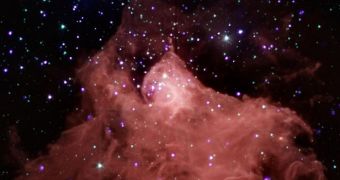Astronomers say that life may have originated at many locations across the Universe at the same time. This means that it may have also developed in other places other than our galaxy, the Milky Way.
In a recent study, experts demonstrated that life is nearly 10 billion years old, which puts its age on par with that of our galaxy. The paper also showed that the chemicals enabling life to exist appeared in nebular clouds, but added that these structures may have been spread out all over the place.
Experts now believe that this is one of the main reasons why we have the different domains of life, such as for example archae, bacteria, eukaryotes, and so on. If life had multiple origins, then the existence of these types of lifeforms makes a lot more sense from an evolutionary perspective.
This theory was developed by Brain Research Laboratory expert Rhawn Joseph and by Harvard-Smithsonian Center for Astrophysics (CfA) investigator Rudolf Schild.
What the researchers are suggesting is that DNA-based lifeforms are a “cosmic imperative,” as in a must given that certain environmental conditions are met. They say that self-replicating nanoparticles were most likely the original source of all life.
These particles were originally made out of carbon, oxygen, hydrogen, calcium, phosphorus and sugars mostly, with some other chemicals and gases also in the mix. When they combined here on Earth, and got irradiated by the Sun, they began developing a nucleus.
After this structure was formed, a lipid-like permeable membrane was established around it, allowing the DNA bases within to come together with phosphate groups and sugars. This evolutionary process may have taken several billions of years to complete.
The main implication of this study is that life cannot catch on form until it acquires a DNA genome. From this, the experts surmised that all life in the Universe must be DNA-based to some extent.
Another theory is that this “universal genetic code” won an evolutionary battle in front of other types of organizational codes that could have underlined life. The mechanisms through which this early dominant code spread are multiple.
Microbes, for example, could have moved from galaxy to galaxy aboard star systems getting swapped during gravitational interactions. Solar winds, space impactors and bolides, as well as other means of “locomotion,” may have also been used.
As for life on Earth, “the progression from simple cell to sentient intelligent being is due to the activation of viral, archae, and bacteria genes acquired from extra-terrestrial life and inserted into the Earthly eukaryote genome,” Schild and Joseph reveal.
“What has been described as a random evolution is in fact the metamorphosis and replication of living creatures which long ago lived on other planets,” they add, quoted by Daily Galaxy.

 14 DAY TRIAL //
14 DAY TRIAL //